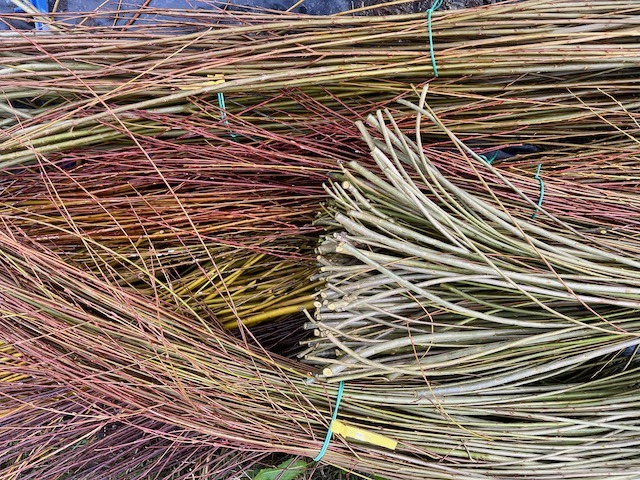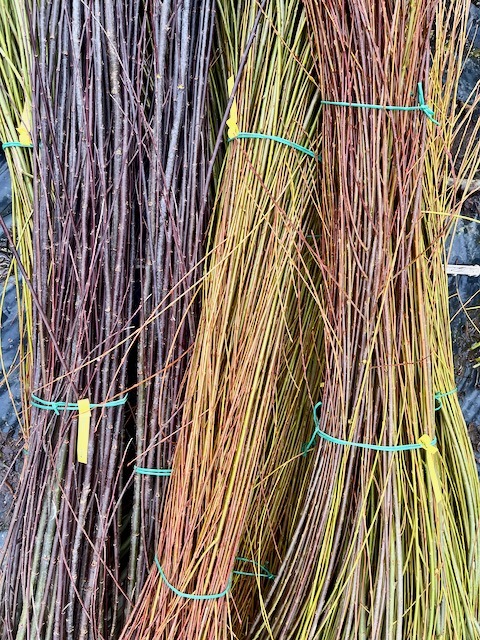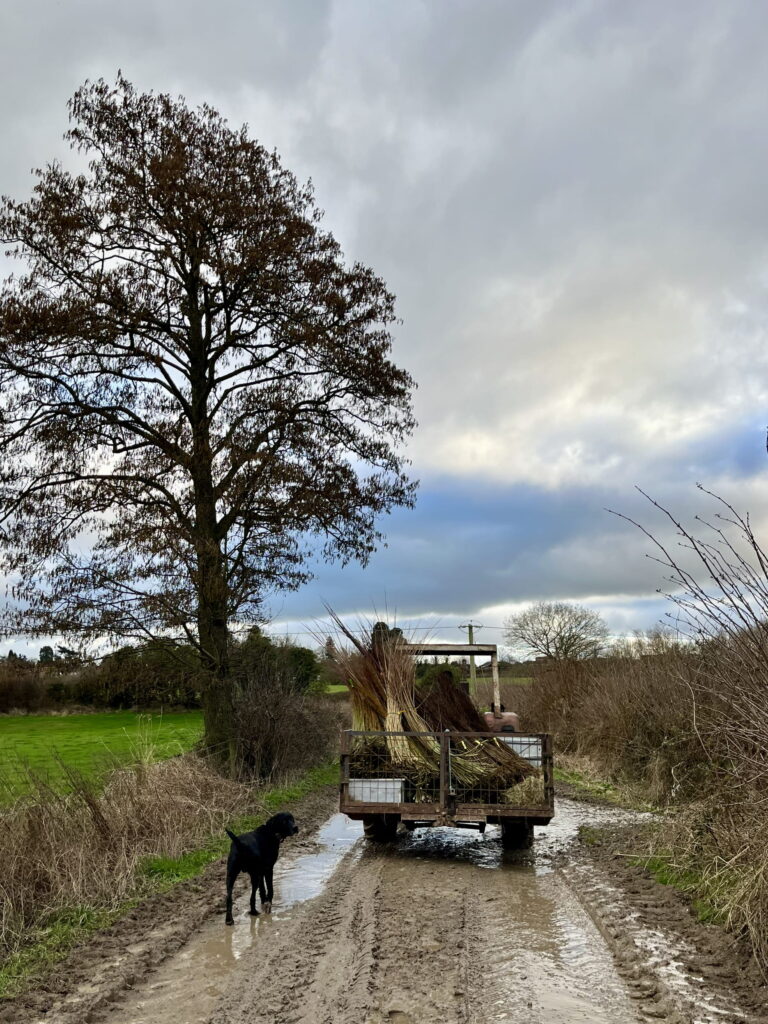
Following on from the previous two blogs, this post looks at the end of the willow growing year: The harvest.
Harvesting
The actual harvest is a satisfying physical task, which is good because it’s usually quite cold! I choose a variety to harvest and cut all of these before moving on to another. Using the loppers for thicker rods and secateurs for thinner, I cut the new growth back to the original cutting. This encourages further new growth for the following year.
Once I’ve cut all of the rods, I sort them into bundles based on length. This is where having them in the bin helps. I start off grabbing all of the longest rods (standing on my step ladder!) and lie them together on the ground. Then the next longest, and so on until I get to the 3 – 4 foot lengths. Once bundled I tie them, label with variety and length before moving them to a sheltered place to dry (currently on our hay loft). They will later be sorted further into thickness too: fine, medium and thick. With over 2000 plants to harvest and an average of 20 rods per cutting, I didn’t have time to do this at the time of harvesting.
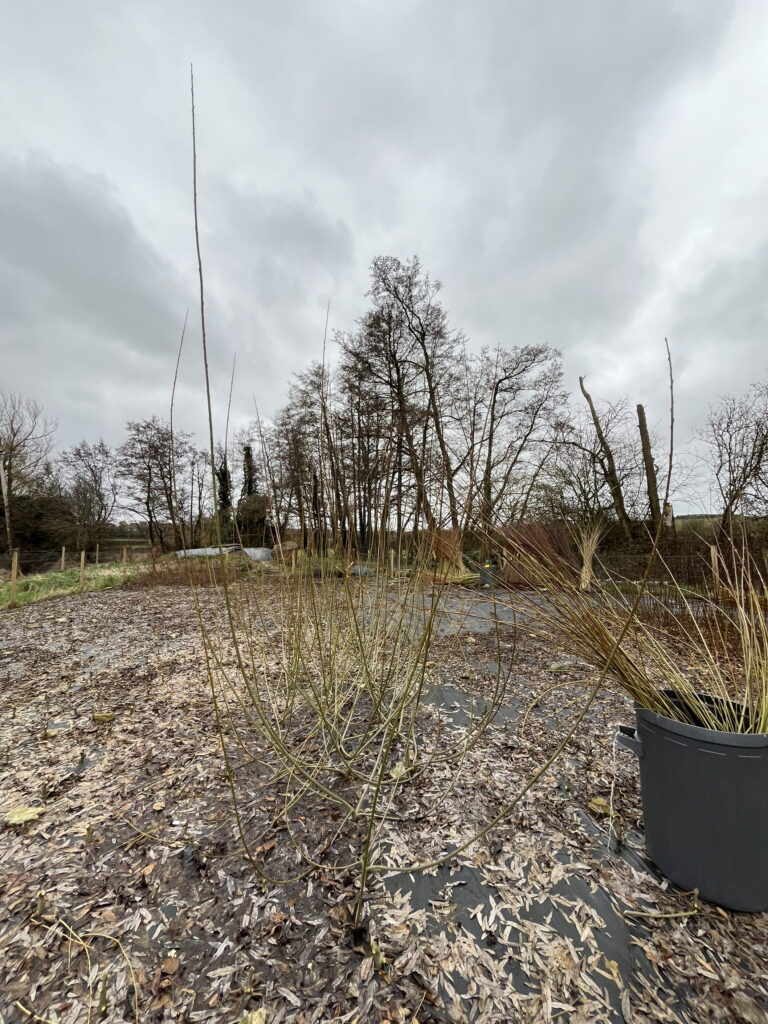
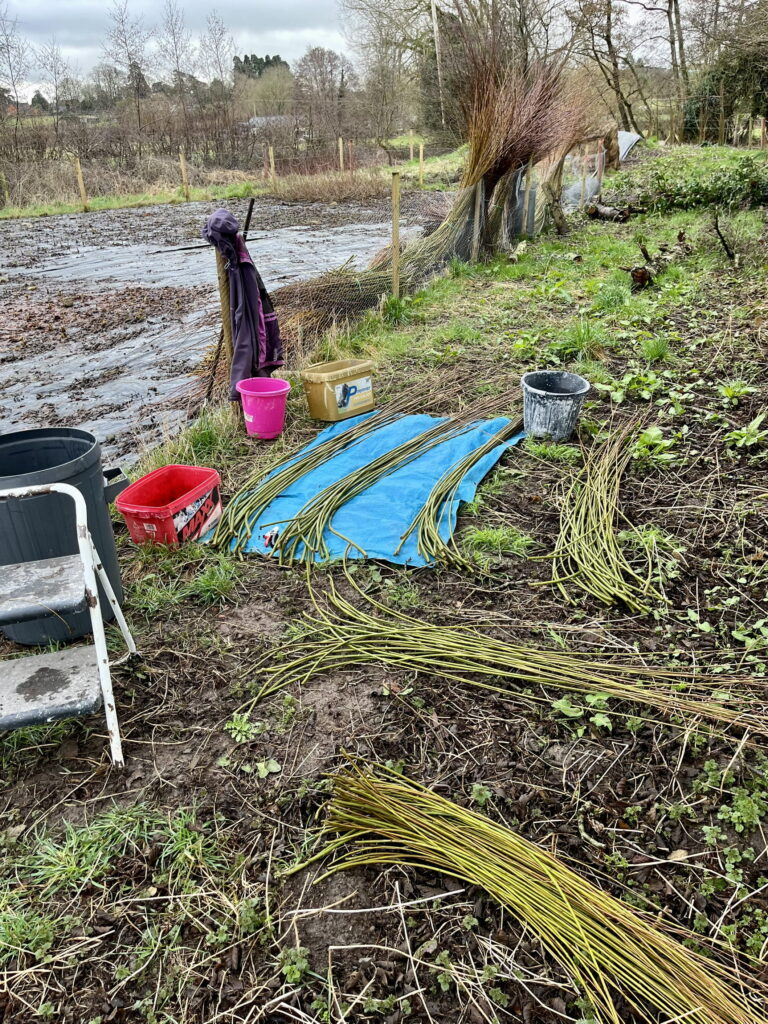
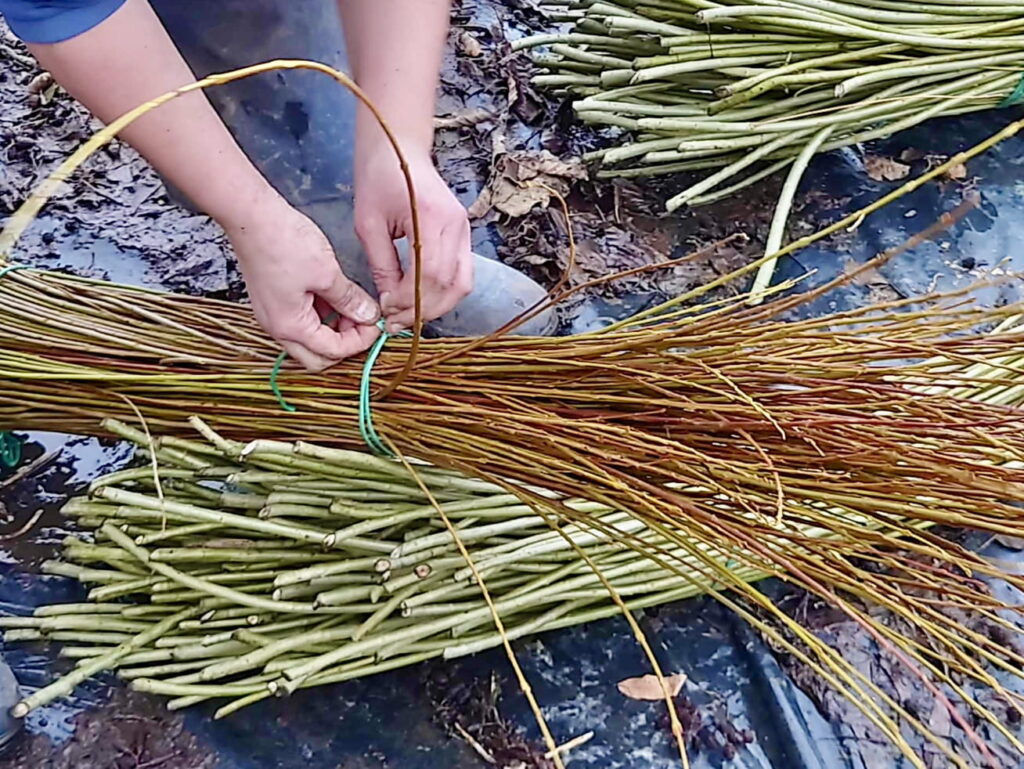
Some varieties had 5 – 10 rods after one year of growth, others had 30 or more! They take a few years to fully establish themselves but the yield should increase each year for about five years. This year’s harvest took over 7 days to cut (not consecutively) so with the extra bed it might take more than double that next year… Watch this space!
The willow harvest is not just about gathering materials; it’s a chance to assess the health of my willow bed. I remove the leaves, look for signs of disease or pests and make mental notes for the upcoming growing season.
If you’re using a membrane (silage wrap or woven landscaping fabric) ensure you make the holes bigger each year as the cutting grows. This helps prevent the willow being strangled and continued growth for the next season.
Expanding
Whilst harvesting the first year’s growth, I observed which varieties grew well: Straight, long, not branchy. Then decided which I wanted to grow more of.
Once you are growing your own willow, you have access to your own cuttings and expanding your willow bed is possible. Simply cut the thickest 30 – 40cm off the bottom of the rod and you have a new willow cutting! The thickest of rods can provide a number of new cuttings, once they are thicker than pencil width.
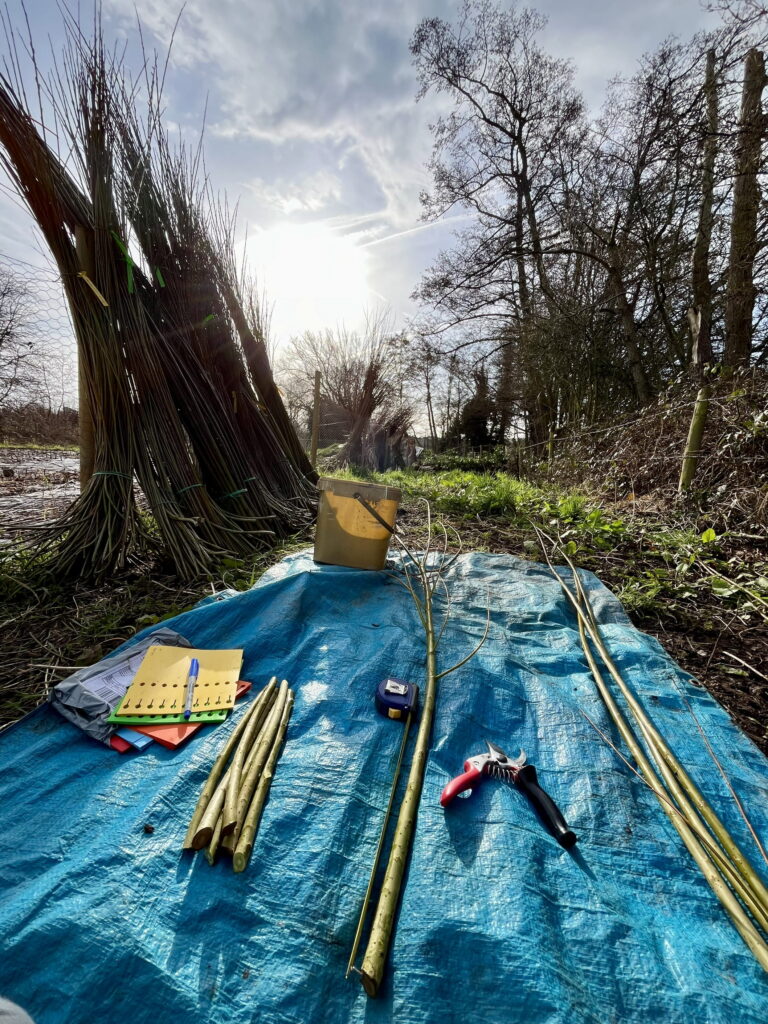
The satisfaction of a successful harvest is immense. Knowing that these rods will soon be transformed into beautiful creations is exciting and makes the hard work worth it. It’s a cycle of growth, harvest, and creation that I find deeply satisfying.
Have I covered everything or do you have a question? Let me know in the comments or send me a message.
